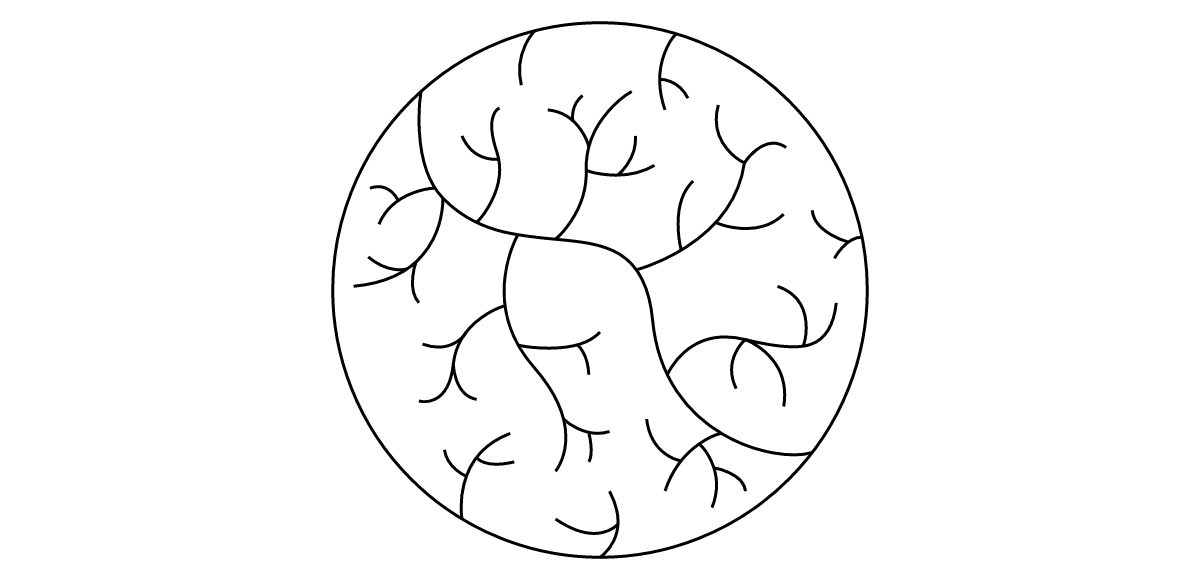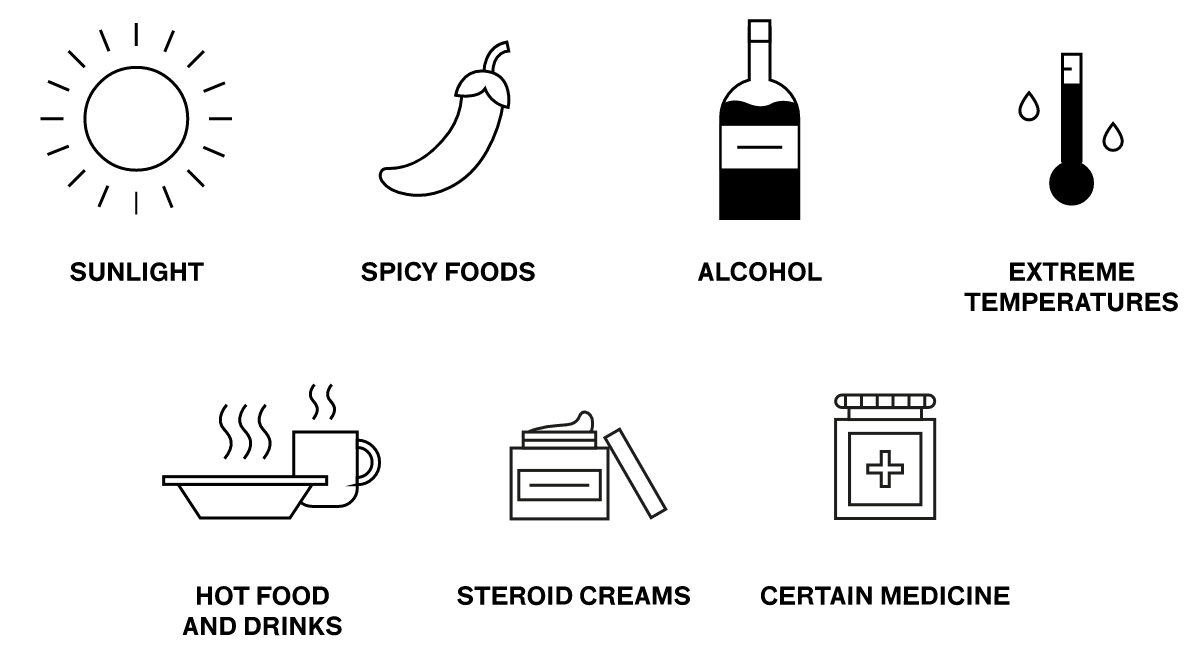A guide to rosacea
Symptoms, triggers, treatments - everything (well, a lot) you need to know about rosacea.

Rosa-what? Roe-zay-she-uh.
Yup. Rosacea is a chronic, inflammatory skin condition that affects the blood vessels of the face. The smallest ones, actually. They’re called capillaries and they lead to telangiectasia.
Telan-what? Okay, we’re not gonna do that every time there’s a long and hard-to-pronounce word.
Telangiectasia is also called spider-veins, because when all the tiny blood vessels of your face get inflamed, they’ll flare up and look (somewhat) like a spiderweb on your face.
Besides visible blood vessels, the initial symptom of rosacea is typically redness. That’s why blushing and flushing are common signs of rosacea.
Though it may sound harmless with a little blushing and flushing - it’s not. Often, the flushing appears in large areas of your face and is more or less constantly there, while your rosacea is flaring up. Also, the skin can get swollen and have a stinging and tingling sensation. So yeah, very uncomfortable.
Over time, small bumpy spots can develop, often causing rosacea to be misdiagnosed as acne.
So, who gets rosacea?
The cause of rosacea is unknown. So what do we actually know about it?
We know that women are typically more exposed to rosacea than men, and that it typically appears in the age between 30-50 - peaking between 40-50. That being said, some people start to get symptoms in their early 20s, so if you’re around that age and are experiencing some of the symptoms, don’t rule out rosacea completely. Also, we’d recommend reaching out to your doctor to get it confirmed before jumping to any conclusions.
Rosacea is believed to be hereditary, like it’s the case for many chronic skin conditions (eczema and psoriasis). But also environmental factors are thought to play a role.
There are a (somewhat large) number of things that can trigger rosacea. However, it’s very individual what triggers rosacea in each person.
What are the most common trigger factors for rosacea?
If you have rosacea and can’t really figure out what triggers it (or if you’re experiencing rosacea-looking symptoms, but don’t know if it’s rosacea or not), try keeping track of when your rosacea flares up.
As mentioned before, the list of triggers can be quite long, but here are some of the most common triggers factors for rosacea:
- Sunlight (or UV light)
- Spicy foods
- Alcohol
- Extreme temperatures
- Hot food and drinks
- Prolonged use of creams containing steriods on the face
- Medicine that has the ability to dilate blood vessels, including medicines for high blood pressure

The thing about treating a skin condition with trigger factors is that while you can do your part to keep the rosacea somewhat at bay - one way to do it is to cut out the things that trigger it.
Simply put: If your rosacea flares up every time you pour chili sauce all over your spaghetti meatballs, then you should probably try cutting out spicy foods. Same thing goes, if you can’t enjoy a nice glass of wine without flushing, then.. yeah 😔
Let’s talk about the treatments of rosacea
As we said in the beginning, rosacea is a chronic skin condition. This means that you can treat it, but you will never fully be rid of it.
We talked about watching out for triggers and how you may avoid serious flare ups by minding those triggers. But how do you treat it once it’s there?
How you should treat your rosacea will often depend on its severity. It may sound like a silly way to characterise it, but rosacea is often divided into 3 categories: mild, moderate, and severe.
You’ll probably figure out along the way how severe your rosacea is. Often, starting out with a very local treatment, such as topical creams, is a good place to start. You’ll often need a prescription from your doctor or dermatologist to get effective topical treatments, since they’re often quite harsh. There are a few over-the-counter topical creams that could potentially work, like creams containing azelaic acid.
In the more severe cases, local treatment (like the creams just mentioned) won’t be enough, and oral antibiotics will then be the next step. We always recommend talking to your doctor or dermatologist if you’re experiencing severe symptoms from a chronic skin condition to sort out the right kind of treatment for you.
Normally, we’d be right there, ready to help with customised skincare for you. Unfortunately, due to the complexity of rosacea, we’re not currently offering any formulations that target rosacea. But don’t worry, you’ll be the first to know if anything changes ✌️
Meanwhile, you’re always more than welcome to take our skin test to get a recommendation for a customised skincare routine to help with your other concerns.